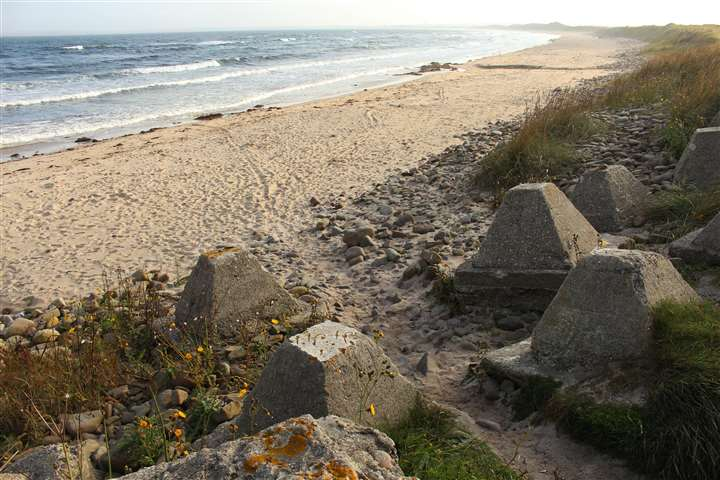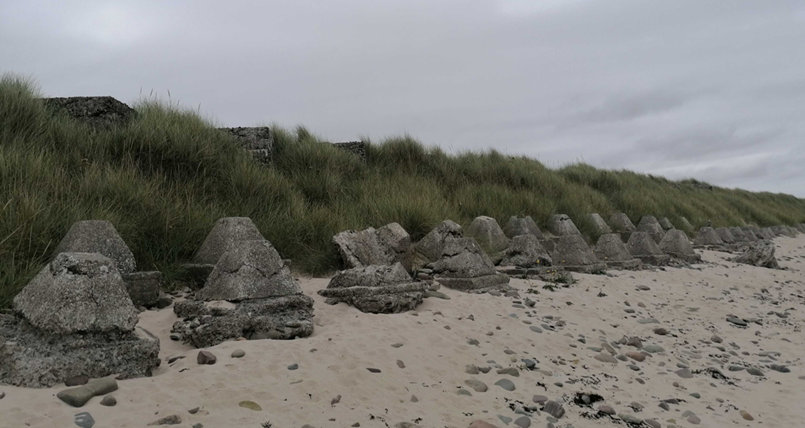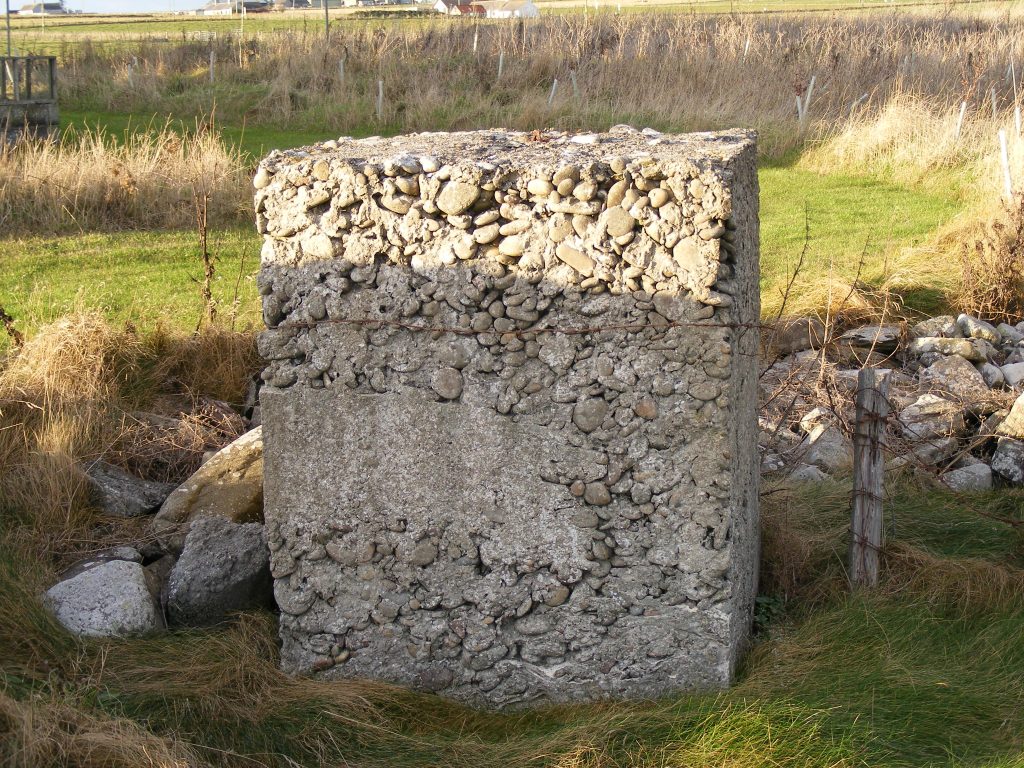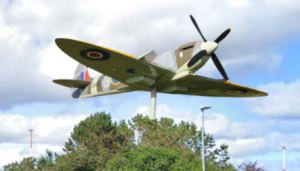Site 4. Anti-Tank Obstacles
Caithness was considered a strategically important target from the outbreak of the war. During 1940 an invasion by the Germans from Nazi-occupied Norway was seen as a very real possibility and even a limited occupation of Caithness could have dramatically altered the course of the war. Sinclair’s Bay, with its long flat stretches of firm sand to land gliders, two RAF airfields nearby, and the harbour at Wick made an ideal potential landing site for such an invasion.
Consequently, anti-invasion defences were hastily constructed all round the bay. This was part of the so-called ‘Coastal Crust’ of defences all around Britain’s most vulnerable stretches of coastline.
One of the defence measures employed in Sinclair’s Bay were rows of concrete anti-tank obstacles stretching from Keiss to Wester River.

There were two types of anti-tank obstacle used here. Firstly, two rows of Pimples, commonly known as Dragon’s Teeth. These are small flat-topped pyramids measuring about 3 feet square by 2 feet high (90 X 90 X 60cm). These were designed so that the front end of a vehicle attempting to climb over would leave the thinly armoured underside exposed to anti-tank weapons. The tracks or wheels could also slip off them, trapping the vehicle in the obstacle rendering it immobile.

If a vehicle managed to negotiate the Dragon’s Teeth they would then find a row of Cubes which were massive concrete blocks measuring either 4 feet square by 5 feet high (1.2 x 1.2 x 1.5m) or 5 feet square by 5 feet high (1.5 x 1.5 x 1.5m) set edge forward and solidly embedded in the ground. The Cubes also had eyelets on the top to attach barbed-wire. There are estimated to be over 1100 Pimples and 400 Cubes constructed round Sinclair’s Bay, many of which are still in place.

To allow access to the beach there were three openings through the rows of obstacles. Pairs of opposing concrete Cubes measuring 5 feet Square (1.5 x 1.5m) had slots in the facing sides which allowed tram rails to be inserted to block the opening.

Graffiti scratched into the wet cement of some obstacles dates the period of construction to around September 1940. The shortage of building materials at the time can be appreciated as some obstacles have been damaged by erosion and exposed the use of inappropriate concrete ballast, such as large beach boulders and even a cast iron cooking pot!



